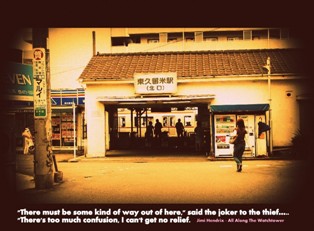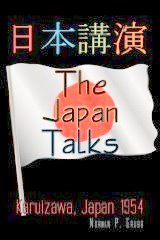After 11 years in San Diego, the aircraft carrier USS Ronald Reagan will begin a voyage on Monday to its new home port in Yokosuka, Japan. The Reagan is one of three aircraft carriers taking part in a swap of home ports. The USS George Washington left Japan, and following a stop here, is destined […]
Monday, August 31, 2015
USS Reagan Leaving for Japan
After 11 Years in San Diego, USS Reagan Leaving for Japan
After 11 years in San Diego, the aircraft carrier USS Ronald Reagan will begin a voyage on Monday to its new home port in Yokosuka, Japan. The Reagan is one of three aircraft carriers taking part in a swap of home ports. The USS George Washington left Japan, and following a stop here, is destined […]

After 11 years in San Diego, the aircraft carrier USS Ronald Reagan will begin a voyage on Monday to its new home port in Yokosuka, Japan. The Reagan is one of three aircraft carriers taking part in a swap of home ports. The USS George Washington left Japan, and following a stop here, is destined […]
Tuesday, August 25, 2015
AUTUMN FESTIVALS
| AUTUMN FESTIVALS CONNECT LOCALS |
By Yuudai Takaki Chief executive GoldHorn Inc. |
| The time to celebrate aki matsuri
(autumn festivals) is almost here. Festivities take place throughout
Japan to commemorate a Shinto ritual celebrating a bountiful harvest and
good catch. Unlike the larger, more prominent natsu matsuri (summer festivals), these autumn festivals impress the visitor with distinctly local delights. In Tokyo, portable shrines can be seen being paraded in each district at the beginning of September. READ MORE |
Monday, August 24, 2015
A Sprawl of Ghost Homes in Aging Tokyo Suburbs

“There are empty houses everywhere, places where nobody’s lived for 20
years, and more are cropping up all the time,” said Ms. Haneda, 77,
complaining that thieves had broken into her neighbor’s house twice and
that a typhoon had damaged the roof of the one next to it.
years, and more are cropping up all the time,” said Ms. Haneda, 77,
complaining that thieves had broken into her neighbor’s house twice and
that a typhoon had damaged the roof of the one next to it.
Friday, August 21, 2015
Japan has so many super old people
| Japan has so many super old people that it can’t afford to give them special sake cups anymore |
| By Elahe Izadi |
| Being very old in Japan comes with perks -- namely, a commemorative silver sake cup, given to each person who reaches 100.When the practice started in 1963, the Asian nation sent out 153 of the commemorative saucer-like cups as a token of recognition that being very old was something unique and truly special. But now Japan has a lot of very old people; so many, in fact, that the government has plans to nix the commemorative silver gifts in lieu of a cheaper option, Kyodo News reports. Read full article » |
Tuesday, August 18, 2015
Friday, August 14, 2015
Japan's Past World War II Apologies
Shinzo Abe Echoes Japan's Past World War II Apologies but Adds None
By JONATHAN SOBLE
Mr. Abe's statement on the eve of the 70th anniversary of the war's
end seemed intended to highlight what he and other conservatives see as
an endless apology.
| World War II ended 70 years ago — here's the planned US invasion of Japan that never happened | ||||
On August 14, 1945, US President Harry Truman announced the...
Read»
|
Thursday, August 13, 2015
Emperor voices his displeasure
| Emperor offers a regal critique of Japan’s drift away from pacifism |
| By Anna Fifield |
| TOKYO — Emperor Akihito is a man of few words. Japan’s American-written constitution designed it that way.But the 81-year-old figurehead has increasingly found ways to skirt the constitutional limits on his role and has, in characteristically subtle language, appeared to voice his displeasure with the path that Prime Minister Shinzo Abe is leading Japan down. Read full article » |
Tuesday, August 11, 2015
For a modern nation, they still don’t get it.
August 9, 2015
Thanks to all for my birthday
greetings, I was here in Guam with power and water, very thankful but thinking
about my people in Saipan.
 A week after the disaster the people
are getting very tired. While trying to get some work done, all are
thinking about securing water, where to shower, what to eat, toilet and long
hot dark nights. Bam declared a state of emergency but as usual FEMA is
slow to respond. The US Military was quick and doing a great job.
People of Guam are coming together and showing a lot of support. Report
this morning was the Seabees got one power plant working and power going to the
hospital. Generator at some water wells and water flowing slowly to the
southern villages. Central area where we are still has no water.
I’ve got a 50K tank full of water so the showers we set up are very busy with
my workers, rain water is refilling the tank. Our relief supplies arrived
and will be distributed today. I’ll be going there tomorrow with more
supplies.
A week after the disaster the people
are getting very tired. While trying to get some work done, all are
thinking about securing water, where to shower, what to eat, toilet and long
hot dark nights. Bam declared a state of emergency but as usual FEMA is
slow to respond. The US Military was quick and doing a great job.
People of Guam are coming together and showing a lot of support. Report
this morning was the Seabees got one power plant working and power going to the
hospital. Generator at some water wells and water flowing slowly to the
southern villages. Central area where we are still has no water.
I’ve got a 50K tank full of water so the showers we set up are very busy with
my workers, rain water is refilling the tank. Our relief supplies arrived
and will be distributed today. I’ll be going there tomorrow with more
supplies.
All generators got sold out real quick
on Guam, tried to get Japan to send several portable gensets but what a
complicated ordeal, first they said airlines would not transport them, then
they’re worried about EPA compliance, then not immediately available, now it’s
O-Bon all week and no one around. For a modern nation, they still don’t
get it. (日本が近代国家であるが、彼らはまだそれを得ることはありません)。To say the least, I’m very disappointed, we’ll try again
today. A small 6000w genset at my staff house would at least give us
lights, some fans, ref. and water pump for the shower & toilet.
So aside from all that, I had a quiet
peaceful birthday.
tom (class of '76)
Monday, August 10, 2015
Japan's Naked Island Hermit
78-year-old Masafumi Nagasaki is the sole resident of a tropical island
located at the southern tip of Okinawa, Japan. He would rather obey the
demands of nature than of another person, which is what led him to
escape civilization and live on Sotobanari Island. We decided to go and
find out exactly what kind of lifestyle he's leading, and why he chooses
not to wear clothes.
Sunday, August 09, 2015
Nagasaki - before and after the bomb
What Nagasaki looked like before and after the bomb
By Ishaan Tharoor
Three days after leveling the city of Hiroshima with a uranium atomic bomb known as a "Little Boy," the United States dropped the more menacing-sounding "Fat Man" over Nagasaki. It was Aug. 9, 1945. Some 40,000 to 80,000 people were killed, and much of the city was pulverized. Nuclear weapons would never again be used in warfare. Read full article »
By Ishaan Tharoor
Three days after leveling the city of Hiroshima with a uranium atomic bomb known as a "Little Boy," the United States dropped the more menacing-sounding "Fat Man" over Nagasaki. It was Aug. 9, 1945. Some 40,000 to 80,000 people were killed, and much of the city was pulverized. Nuclear weapons would never again be used in warfare. Read full article »
Friday, August 07, 2015
Thursday, August 06, 2015
What it would look like if the Hiroshima bomb hit your city
What it would look like if the Hiroshima bomb hit your city
Seventy years ago today, the U.S. dropped an atomic bomb on Hiroshima, Japan, and three days later dropped another bomb, this time on Nagasaki. As the Washington Post reports, a nuclear historian has created a NukeMap that allows you to visualize what the Hiroshima and Nagasaki explosions would look like in your hometown.
Seventy years ago today, the U.S. dropped an atomic bomb on Hiroshima, Japan, and three days later dropped another bomb, this time on Nagasaki. As the Washington Post reports, a nuclear historian has created a NukeMap that allows you to visualize what the Hiroshima and Nagasaki explosions would look like in your hometown.
As their numbers dwindle, Hiroshima survivors have a plan to keep memories alive
By Anna Fifield
HIROSHIMA, Japan — The crowd sat entranced as 78-year-old Emiko Okada recalled the horrifying events of Aug. 6, 1945, a day that started hot and cloudless. There was the buzz of the plane, the huge flash, the cries for water, the kids like ghosts with skin dangling off them, the people with their guts hanging out. Read full article »
By Anna Fifield
HIROSHIMA, Japan — The crowd sat entranced as 78-year-old Emiko Okada recalled the horrifying events of Aug. 6, 1945, a day that started hot and cloudless. There was the buzz of the plane, the huge flash, the cries for water, the kids like ghosts with skin dangling off them, the people with their guts hanging out. Read full article »
Wednesday, August 05, 2015
Japan: Children in Institutions Denied Family Life
(Tokyo, May 1, 2014) Japan's overwhelming use of institutions instead of
family-based care is failing thousands of vulnerable children by not
preparing them for independent, productive lives in Japanese society.
According to government statistics, more than 39,000 children in Japan
live in different kinds of institutions across the country. These are
"alternative care" settings, including infant care institutions, child
care institutions, short-term therapeutic institutions, group homes for
independent living, and foster care and family homes. The children were
removed from their families because the authorities determined that
their parents were either unable or unwilling to care for them properly.
Monday, August 03, 2015
Ramu Tokashiki in the W.N.B.A.

Seattle's Ramu Tokashiki, the third Japanese woman to
play in the play in the
W.N.B.A. and the most successful yet, has become a growing fan favorite
W.N.B.A. and the most successful yet, has become a growing fan favorite
Subscribe to:
Posts (Atom)




















